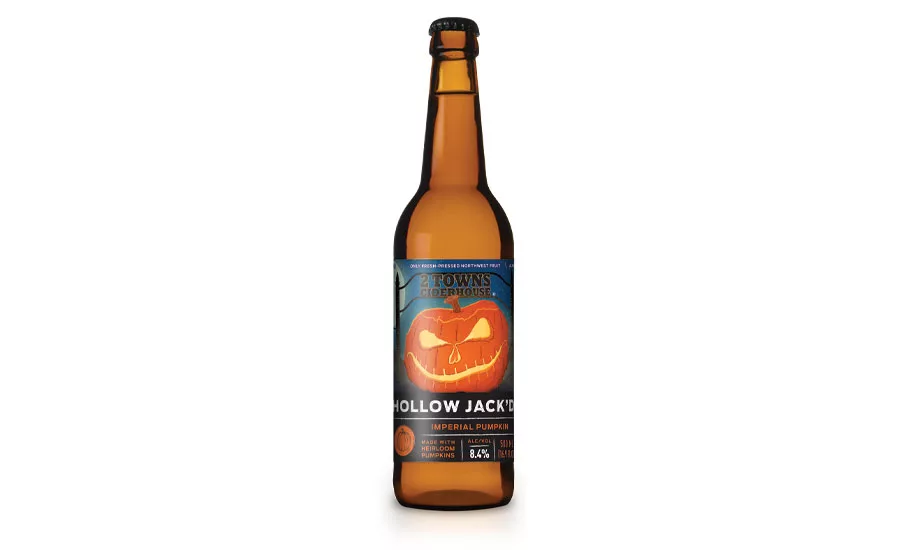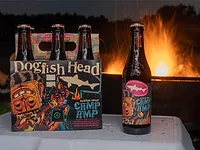2020 Beer Report: Hard cider market looks to rebound after single-digit decline
Analysts highlight importance of reinvention for beer segment

In “The Simpsons” episode titled “Lisa vs. Malibu Stacy,” Lisa Simpson challenges Malibu Stacy creator Stacy Lovell to create a toy doll that serves as positive doll role model for young girls. After receiving a positive review by the local TV anchor, the Lisa Lionheart doll looks to be the next toy of the season until the toy company that now owns Malibu Stacy releases a version of its doll, which features a new hat. The ebb and flow of the fictional Lisa Lionheart is not too far removed from the swings that the U.S. hard cider market has faced.
“Hard cider performs very similarly to flavored malt beverages and tends to have some faddish qualities,” says Brian Sudano, managing partner at New York-based Beverage Marketing Corporation (BMC). “When cider was growing very rapidly, a lot of the major brewers entered the category and spent tremendous amounts of money advertising brands in the category, between $65 and $70 million. This drove tremendous interest in the segment but volume growth was large in percentage terms but not absolute volume, [suggesting] the American consumer was not ready to adopt cider in a meaningful way. Not surprisingly, spending slowed and volume eventually began to decline.”
Compared with other segments in the beer market, hard cider remains niche. Chicago-based Information Resources Inc. (IRI) reports the segment registered sales of $428.2 million in total U.S. multi-outlets with convenience for the 52 weeks ending Dec. 29, 2019, a decline of 2.2 percent. In fact, the only beer segments with fewer dollar sales than hard cider are non-alcohol ($131.9 million) and assorted ($39.9 million).
As BMC’s Sudano notes, performance of hard ciders has been inconsistent. IRI data for the 52 weeks ending Dec. 30, 2018, showed that dollar sales were up 10.1 percent. However, the year prior, dollar sales were down 3.1 percent for the 52 weeks ending Dec. 31, 2017, IRI data shows. With such fluctuations, experts note that the key to returning the beer segment to growth lies in health and wellness and appealing to consumers connected with that trend.
(Brand family)
| Dollar Sales | % Change vs. Prior Year | Case Sales | % Change vs. Prior Year | |
| Angry Orchard | $220,101,608 | -10.2 | 5,955,050 | -11 |
| Bold Rock | $27,816,173 | 8.4 | 757,836 | 11.6 |
| Strongbow | $16,294,817 | -28 | 435,771 | -27.5 |
| 2 Towns | $14,306,343 | 17.9 | 233,818 | 23.7 |
| Austin Eastciders | $12,387,504 | 11.6 | 294,488 | 13.2 |
| Stella Artois Cidre | $12,291,334 | -20.8 | 349,603 | -20.6 |
| Ace | $11,523,120 | 12.5 | 269,839 | 14.7 |
| Crispin | $8,523,508 | 6.7 | 212,476 | 12.8 |
| Woodchuck | $7,284,130 | 12.4 | 177,612 | 8.2 |
| Citizen Cider | $6,486,687 | 22.8 | 123,194 | 21.5 |
| Total sales* | $428,258,703 | -2.2 | 10,656,244 | -4.5 |
*Includes brands not listed.
Source: Information Resources Inc. (IRI), Chicago. Total U.S. supermarkets, drug stores, gas and convenience stores, mass merchandisers, military commissaries, and select club and dollar retail chains for the 52 weeks ending Dec. 29, 2019.
“The category needs to recruit a new group of consumers and include products that meet with consumers current demands centered [on] health and wellness,” Sudano says. “This includes low calories and all natural ingredients among other things.”
The analyst notes that hard ciders current calorie counts have hampered its recent growth. “High calorie level is fighting against consumer’s desire for healthier, less guilt, beverage alcohol,” Sudano says.
Similar to flavored malt beverages, the performance of the hard cider segment has been dependent upon sales of top brand families. For hard ciders, the Angry Orchard brand family, a brand of Boston-based The Boston Beer Co., accounts for more than 50 percent of the market’s dollar share. However, dollar sales for the brand took a step back, declining 10.2 percent for a total of $220.1 million in sales for the 52 weeks ending Dec. 29, 2019, according to IRI data.
Sudano also highlights the impact that major brands have on the performance of hard ciders. “Macro ciders performance has been driven by new ‘hot’ flavor,” he says. “As the cider industry is highly concentrated, macro ciders drive the category in general.”
Extending for growth
To encourage consumers to enter or remain buyers within the hard cider segment, Sudano notes that it is important for a product to deliver on various attributes to succeed.
Although health and wellness will remain an attribute that the market likely will need to address, the market research analyst also points to the importance of flavor innovation.
“The cider category performs similarly to flavored malt beverages,” Sudano says. “For the most part, the category will be driven by new flavor extensions.”
Corvallis, Ore.-based 2 Towns Ciderhouse embraced this approach when it released its seasonal Hollow Jack’D, an 8.4 percent alcohol-by-volume limited-release hard cider. The limited-edition hard cider was a combination of fresh-pressed apples, locally sourced caramelized pumpkins, cloves, nutmeg and sweet potatoes, the company says.
Vermont Cider Co., Middlebury, Vt., also looked to expand its portfolio with release of Woodchuck Hard Cider 802 Collection Kinda Cloudy Hard Cider. An unfiltered, semi-sweet variety, Kinda Cloudy was crafted to resemble the classic farm stand cider, the company says. The cider has a medium-bodied mouthfeel, showcasing notes of refreshing apple, subtle hints of Champagne, and a slight tartness at the finish, it adds. BI
Looking for a reprint of this article?
From high-res PDFs to custom plaques, order your copy today!






